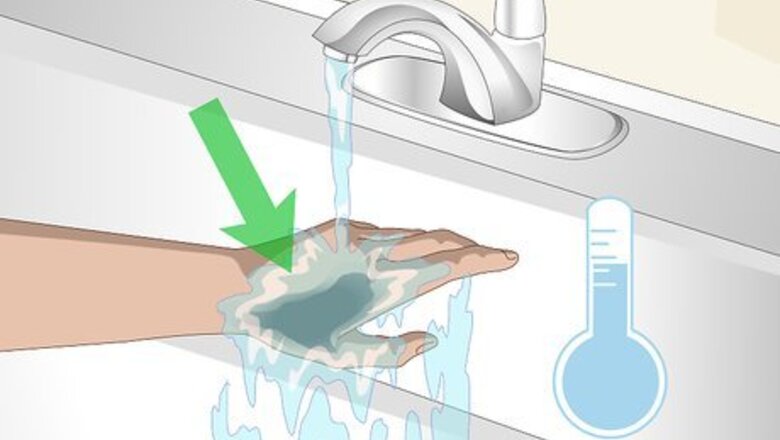
views
Dermatologist Mohiba Tareen, MD says, “Run the tarred area under cold water immediately…Once the tar cools, use an ice pack to harden it until it cracks.” Gently remove the tar pieces and use an exfoliating scrub like baking soda paste for stubborn stains. Cleanse with gentle soap and moisturize.
Performing First Aid on Skin Covered in Tar
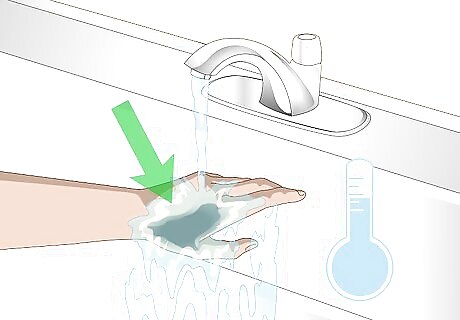
Run cold water over the tar immediately. Place the skin covered in tar under cold, running water. For larger areas of the skin, take a cold shower. Keep the tarred skin in or under the water for at least 20 minutes. This can stop the tar from burning your skin while you determine if you need immediate medical attention or can remove the tar at home. Avoid using very cold water or ice on the tar until you determine your course of action.
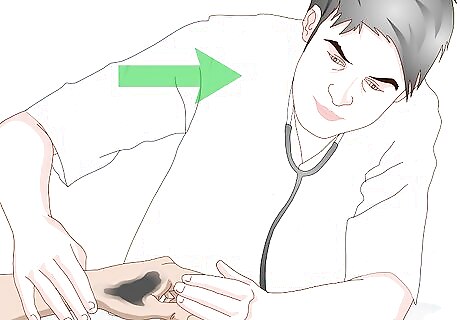
Seek immediate medical attention. Although rare, tar can burn your skin and damage the skin underneath it. Seeing a doctor can ensure proper treatment of burns or other skin damage due to tar, minimize your pain and discomfort, and help your skin heal optimally. Seek immediate medical attention if: the tar is hot even after running cool water over it the tar feels like it is burning you the tar covers a large area of skin or your body the tar is near or in your eyes

Remove clothing or jewelry from affected skin. Take off any clothing or fabric that covers the tarred skin. This can further dissipate heat and minimize burning, damage, or other discomfort. Avoid pulling off clothing or other items that have stuck to the skin to prevent further damage. If you cannot remove the clothing, seek prompt medical attention.
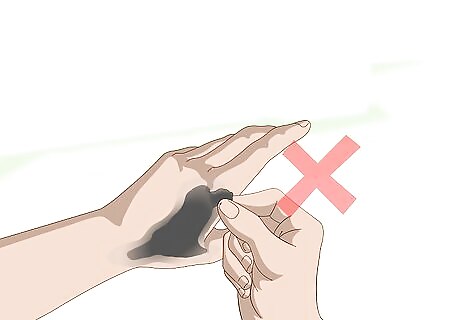
Avoid picking at the tar. Keep your fingers from picking at the tar until it cools completely on your skin. Allowing the tar to cool fully before you remove it can minimize the risk of damage to the skin underneath and ensure that it heals properly.
Icing Tar Off of Your Skin
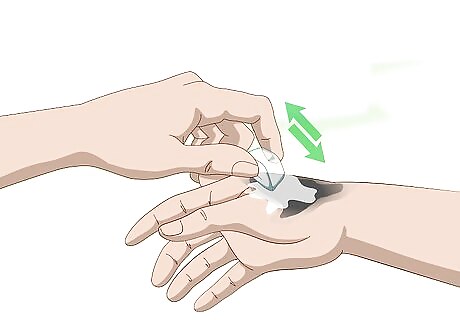
Harden the tar with ice. Rub your skin that has on it with an ice cube or ice pack. Keep rubbing until the tar hardens or cracks. This can make it easier to peel away the tar from your skin and treat any damage or remove stains. If your skin gets too cold, remove the ice and let the tar sit for a few minutes. This can prevent ice burning or frostbite.

Peel off hardened and cracked tar. Using gentle pulling motions, peel away any cooled tar from your skin. If the tar cracks, continue peeling away little pieces until you've removed each bit. Peeling away the tar may hurt or cause you discomfort from pulling out small hairs caught in the tar. If removing the tar becomes too painful, seek medical attention to minimize the risk of damage to your skin. Harden the tar with ice again if it softens from your body heat.
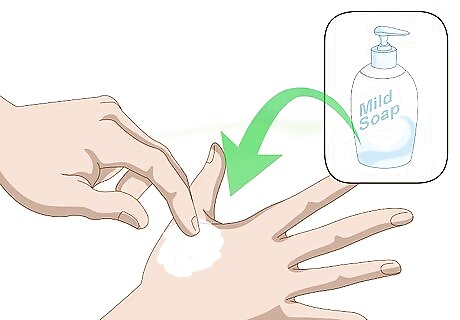
Cleanse your skin. If you are able to remove the tar, cleanse your skin with a mild soap. Use a gentle, circular motion to spread the cleanser around the affected area. Then rinse your skin clean, warm water. This can remove tar fragments and residue. It can also get rid of any bacteria or germs that may cause infection on injured skin.
Using Household Products
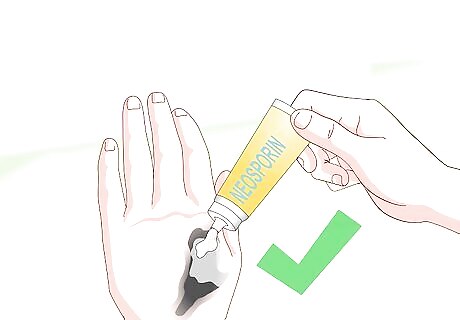
Layer on polysorbate cream. Apply Neosporin ((polymyxin B sulfate-neomycin sulfate-gramicidin) or Tween 80 (polyoxyethylene 20 sorbitan mono-oleate) to your skin with tar on it. Allow it to work into the tar and your skin for a few minutes before gently wiping it away with a clean cloth or rinsing it off with warm water. This may be the most effect and safest way to remove tar. These two products break down tar, are virtually non-toxic, and may cause less pain and damage to your skin.
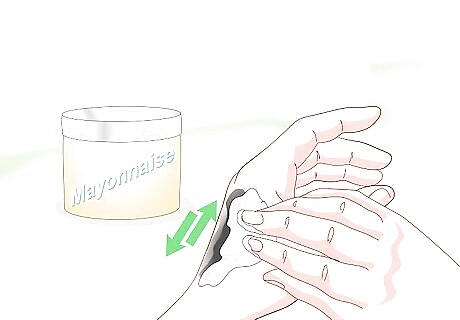
Spread on mayonnaise. Apply a thick layer of mayonnaise over the cooled tar. Let the mayonnaise work into your skin for at least 30 minutes. This allows the mayonnaise to break down the tar. Then, gently wipe away the mayonnaise and tar from your skin with a clean cloth or soft brush. Follow up by cleansing the affected skin to remove any residue, stains, or bacteria.
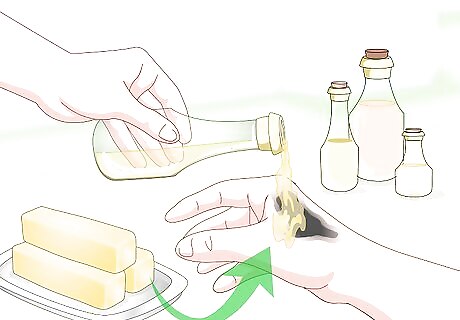
Cover the tarred area with household oils. Look through your pantry for different types of oil you eat or put on your skin. Pour a generous amount of your chosen oil over the tar and surrounding skin. Allow the oil to work into the tar for 20 minutes. Then gently peel or scrape the tar off of your skin. Wash or wipe off excess oil and tar with a mild soap, clean water, and a soft cloth. The following household oils can also remove tar from your skin. Sunflower oil, which may be especially effective Butter Baby oil Canola Coconut oil Olive oil

Cover the tar with petroleum jelly. Spread a layer of petroleum jelly over your tarred skin and the surrounding area. Wait five minutes to let the petroleum jelly work into the tar. Then gently wipe away the excess petroleum jelly and tar from your skin. Follow up by cleansing and rinsing your skin to remove lingering tar or stains. Reapply petroleum jelly if you still have tar or stains on your skin.
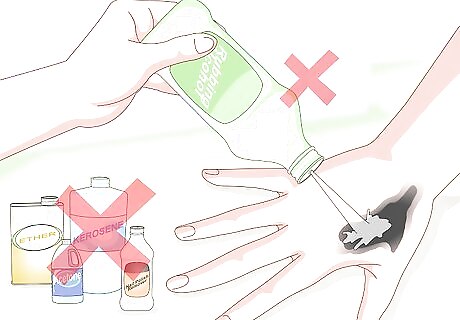
Avoid toxic chemicals. You may get suggestions to remove tar from your skin using household items such as nail polish remover. Steer clear of anything potentially toxic because your skin can absorb it and the product may harm your health. Avoid the following household items on your skin to remove tar: Alcohol Acetone Nail polish remover Kerosene Ether Gasoline Aldehydes
Exfoliating Tar Remnants and Stains
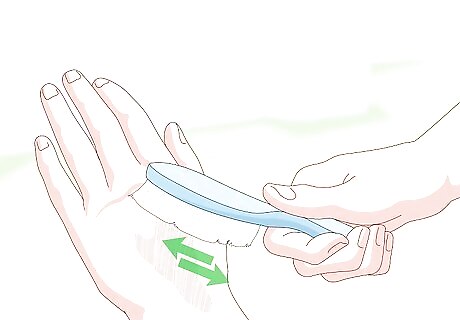
Remove stains with a scrub brush. Tar can leave stains on your skin even after you remove it. Scrubbing your skin gently can remove any excess tar or staining from it. Gently rub a clean washcloth or soft scrubber brush over stains or lingering bits of tar. Then cleanse your skin and rinse it with warm water. Repeat the scrubbing process if necessary.
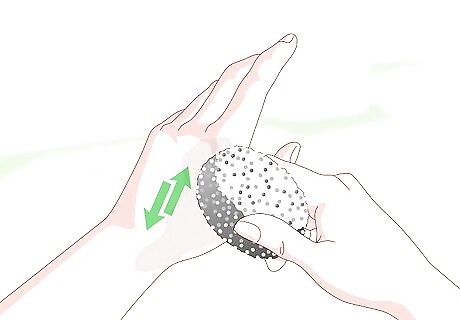
Clear away stains with pumice. Using a gentle circular motion, rub a pumice stone over any tar or stains. Use a mild soap together with the pumice stone if you like. Then rinse the area with warm water and pat it dry with a clean towel. This can easily and effectively remove any lingering tar or stains on your skin.

Apply an exfoliating scrub. If you have tar or stains that are particularly difficult to remove, use an exfoliating scrub on your skin. You can buy or make your own exfoliator. Spread a layer of your chosen exfoliator over the area with tar bits or stains. Gently rub the exfoliator into your the skin until the tar or stains are gone. Some easy exfoliators you can make at home include: Baking soda Sugar and olive or coconut oil paste Salt and almond oil paste Finely ground oatmeal and honey paste
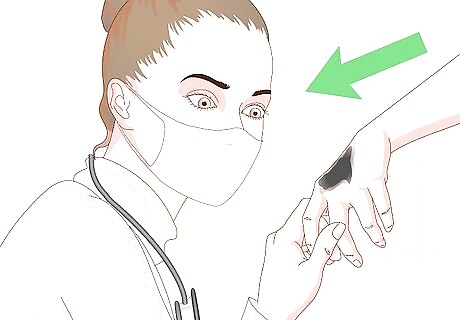
See your doctor. In some cases, you may not be able to remove tar from your skin or have very sensitive skin after removal. Make an appointment to see your doctor if this happens. The doctor can diagnose potential problems, remove lingering tar or stains, and administer appropriate treatment to your skin. Get medical attention if: You can't remove the tar You have lingering stains You have pain or discomfort that won't go away You notice injury or damage to the skin exposed to the tar




















Comments
0 comment